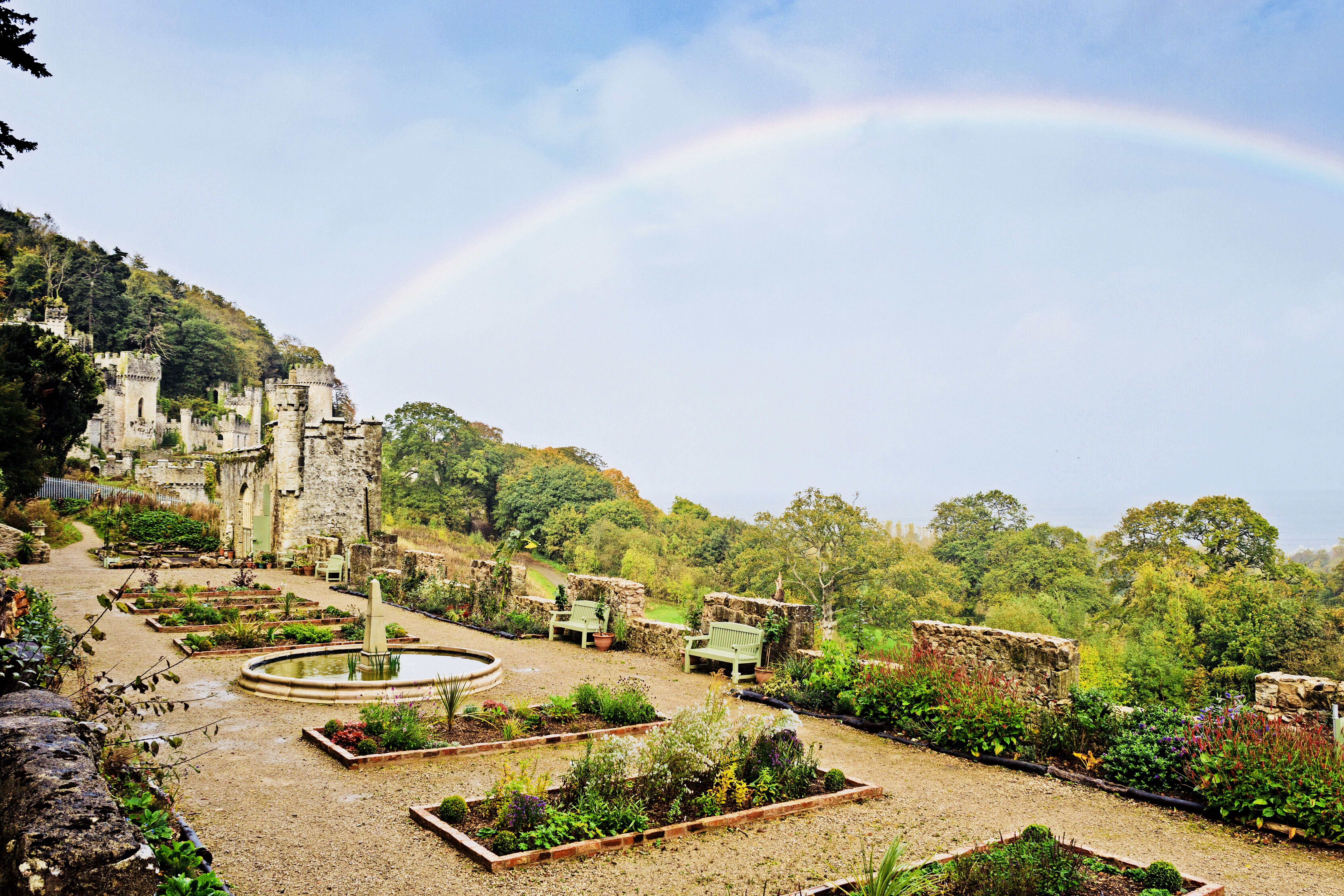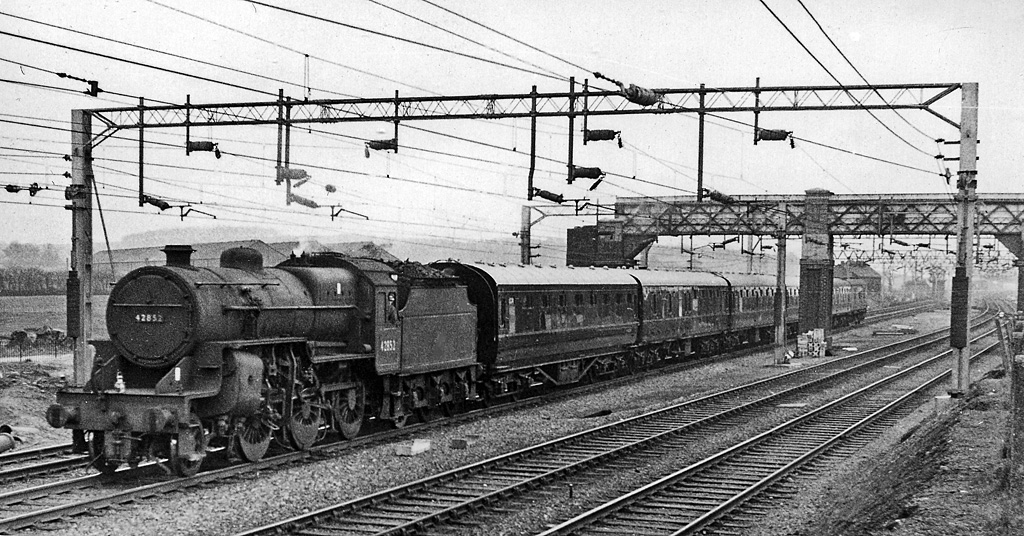|
Ian Fraser Kilmister
Ian Fraser Kilmister (24 December 1945 – 28 December 2015), better known as Lemmy Kilmister or simply Lemmy, was an English musician. He was the founder, lead singer, bassist and primary songwriter of the rock band Motörhead, of which he was the only continuous member, and a member of Hawkwind from 1971 to 1975. A foundational force in the genre following the advent of the new wave of British heavy metal, Lemmy was known for his appearance, which included his signature friendly mutton chops, his military-influenced fashion sense and his gravelly rasp of a voice. It was once declared "one of the most recognisable voices in rock". He was also noted for his unique way of singing, which was once described as "looking up towards a towering microphone tilted down into his weather-beaten face". He was also known for his bass playing style and using his Rickenbacker bass to create an "overpowered, distorted rhythmic rumble". Another notable aspect of his bass sound was that he oft ... [...More Info...] [...Related Items...] OR: [Wikipedia] [Google] [Baidu] |
Stoke-on-Trent
Stoke-on-Trent (often abbreviated to Stoke) is a city and Unitary authorities of England, unitary authority area in Staffordshire, England, with an area of . In 2019, the city had an estimated population of 256,375. It is the largest settlement in Staffordshire and is surrounded by the towns of Newcastle-under-Lyme, Alsager, Kidsgrove, Biddulph and Stone, Staffordshire, Stone, which form a conurbation around the city. Stoke is wikt:polycentric, polycentric, having been formed by Federation of Stoke-on-Trent, the federation of six towns in 1910. It took its name from Stoke-upon-Trent where the main centre of government and the principal Stoke-on-Trent railway station, railway station in the district were located. Hanley, Staffordshire, Hanley is the primary commercial centre; the other four towns which form the city are Burslem, Tunstall, Staffordshire, Tunstall, Longton, Staffordshire, Longton and Fenton, Staffordshire, Fenton. Stoke-on-Trent is the home of the pottery industr ... [...More Info...] [...Related Items...] OR: [Wikipedia] [Google] [Baidu] |
New Wave Of British Heavy Metal
The new wave of British heavy metal (commonly abbreviated as NWOBHM) was a nationwide musical movement that started in England in the mid-1970s and achieved international attention by the early 1980s. Journalist Geoff Barton coined the term in a May 1979 issue of the British music newspaper ''Sounds (magazine), Sounds'' to describe the emergence of new heavy metal music, heavy metal bands in the mid to late 1970s, during the period of punk rock's decline and the dominance of new wave music. Although encompassing diverse mainstream and underground styles, the music of the NWOBHM is best remembered for drawing on the heavy metal of the 1970s and infusing it with the intensity of punk rock to produce fast and aggressive songs. The DIY ethic, DIY attitude of the new metal bands led to the spread of raw-sounding, self-produced recordings and a proliferation of independent record labels. Song lyrics were usually about escapism, escapist themes, such as mythology, fantasy, horror and ... [...More Info...] [...Related Items...] OR: [Wikipedia] [Google] [Baidu] |
Gwrych Castle
Gwrych Castle ( cy, Castell Gwrych meaning "hedged castle") (Originally spelt as 'Gwrŷch') is a Grade I listed 19th-century country house near Abergele in Conwy County Borough, Wales. The castle and 236 acre estate are owned by a charity, and a portion of the land is leased to Natural Resources Wales for a 999-year term. Foundation of the castle Gwrych Castle was built between 1810 and 1825 by Lloyd Hesketh Bamford-Hesketh (1787–1861), in memory of his mother Frances Lloyd and her ancestors. It incorporated an earlier house that had been in the ownership of the Lloyds since the late-medieval period. From 1894 until 1924, Winifred, Countess of Dundonald, the Hesketh heiress, owned the estate and it became the residence of the Earls of Dundonald (family name of Cochrane). The countess left the castle in her will to King George V and the then Prince of Wales (who later became Edward VIII). However, the gift was refused and the castle passed to the Venerable Order of Sa ... [...More Info...] [...Related Items...] OR: [Wikipedia] [Google] [Baidu] |
Benllech
Benllech (; ) is a large village on the Isle of Anglesey in Wales. It is in the community of Llanfair-Mathafarn-Eithaf, which has a population of 3,382, making it the fourth largest settlement on the island of Anglesey. The name of Benllech village had been removed by the time of the 2011 census with the community being listed under Llanfair-Mathafarn-Eithaf with the electoral ward being listed under Llanddyfnan. The built-up area has a population of 2,236. Description The name Benllech is perhaps a mutated form of ''penllech'', literally "head slab" or "head rock", i.e. "capstone" or "head of the rock", or possibly meaning 'on slate', shortened from the Welsh term 'ar ben llech'. Benllech is a well established seaside resort and popular beach holiday destination. Winner of the European Blue Flag award since 2004, the beach shelves an abundance of clean yellow sand and looks out toward the Great Orme and Penmon Point. The Anglesey Coastal Path and Wales Coast Path pass t ... [...More Info...] [...Related Items...] OR: [Wikipedia] [Google] [Baidu] |
Madeley, Staffordshire
Madeley is a village and ward in the Borough of Newcastle-under-Lyme, North Staffordshire, England. It is split into three parts: Madeley, Middle Madeley, and Little Madeley. Madeley Heath is also considered by many to be part of Madeley. In the 2001 census, the population was recorded as 4,386, decreasing to 4,222 at the 2011 Census. Geography Madeley is located west of Newcastle-under-Lyme town centre and is close to the Shropshire and Cheshire borders. To the north are the villages of Betley and Wrinehill. South is the hamlet of Baldwin's Gate. To the east is Keele, the site of Keele University as well as Silverdale, whilst to the west lies Onneley and Woore. History Madeley is derived from the Saxon, Madanlieg, meaning 'a clearing in the woods belonging to Mada' (Mada is a female Saxon name). Madeley is recorded in the Domesday Book as being of wood and 4 plough teams. The first Madeley Old Manor was built by Robert de Stafford, with the local church being ... [...More Info...] [...Related Items...] OR: [Wikipedia] [Google] [Baidu] |
Newcastle-under-Lyme
Newcastle-under-Lyme ( RP: , ) is a market town and the administrative centre of the Borough of Newcastle-under-Lyme in Staffordshire, England. The 2011 census population of the town was 75,082, whilst the wider borough had a population of 128,264 in 2016, up from 123,800 in the 2011 Census. Toponym The name "Newcastle" is derived from a mid 12th century motte and bailey that was built after King Stephen granted lands in the area to Ranulf de Gernon, Earl of Chester; the land was for his support during the civil war known as The Anarchy. "Lyme" might refer to the Lyme Brook or the Forest of Lyme (with lime and elm trees) that covered an extensive area across the present day counties of Cheshire, Staffordshire and parts of Derbyshire. History 12th–19th centuries Newcastle was not recorded in the 1086 Domesday Book, as it grew up round a 12th-century castle, but it must have gained rapid importance, as a charter, known solely through a reference in another charter to P ... [...More Info...] [...Related Items...] OR: [Wikipedia] [Google] [Baidu] |
Marshall Amplification
Marshall is a British company that designs and manufactures music amplifiers, speaker cabinets A loudspeaker enclosure or loudspeaker cabinet is an enclosure (often rectangular box-shaped) in which speaker drivers (e.g., loudspeakers and tweeters) and associated electronic hardware, such as crossover circuits and, in some cases, power ..., brands personal headphones and earphones, drums and bongo drum, bongos. The company also owns a record label called Marshall Records. It was founded in London by drum shop owner and drummer, Jim Marshall (businessman), Jim Marshall, and is now based in Bletchley, Milton Keynes, England. Marshall's guitar amplifiers are among the most recognised in the world. Their signature sound characterised by sizzling distortion and "crunch" was conceived after guitarists, such as Pete Townshend, visited Marshall's drum shop complaining that the guitar amplifiers then on the market did not have the right sound or enough volume. After gaining publ ... [...More Info...] [...Related Items...] OR: [Wikipedia] [Google] [Baidu] |
Bass Amplifier
A bass amplifier (also abbreviated to bass amp) is a musical instrument electronic device that uses electrical power to make lower-pitched instruments such as the bass guitar or double bass loud enough to be heard by the performers and audience. Bass amps typically consist of a preamplifier, tone controls, a power amplifier and one or more loudspeakers ("drivers") in a cabinet. While bass amps share many features with the guitar amplifiers used for electric guitar, they are distinct from other types of amplification systems, due to the particular challenges associated with low-frequency sound reproduction. This distinction affects the design of the loudspeakers, the size and design of the speaker cabinet and the design of the preamplifier and amplifier. Speaker cabinets for bass amps usually incorporate larger loudspeakers (e.g., speakers are more common for bass than for electric guitar amps) or more speakers and larger cabinet sizes than those used for the amplification ... [...More Info...] [...Related Items...] OR: [Wikipedia] [Google] [Baidu] |
Distortion (music)
Distortion and overdrive are forms of audio signal processing used to alter the sound of amplified electric musical instruments, usually by increasing their gain, producing a "fuzzy", "growling", or "gritty" tone. Distortion is most commonly used with the electric guitar, but may also be used with other electric instruments such as electric bass, electric piano, synthesizer and Hammond organ. Guitarists playing electric blues originally obtained an overdriven sound by turning up their vacuum tube-powered guitar amplifiers to high volumes, which caused the signal to distort. While overdriven tube amps are still used to obtain overdrive, especially in genres like blues and rockabilly, a number of other ways to produce distortion have been developed since the 1960s, such as distortion effect pedals. The growling tone of a distorted electric guitar is a key part of many genres, including blues and many rock music genres, notably hard rock, punk rock, hardcore punk, acid ro ... [...More Info...] [...Related Items...] OR: [Wikipedia] [Google] [Baidu] |
Power Chord
A power chord (also fifth chord) is a colloquial name for a chord in guitar music, especially electric guitar, that consists of the root note and the fifth, as well as possibly octaves of those notes. Power chords are commonly played on amplified guitars, especially on electric guitar with intentionally added distortion or overdrive effects. Power chords are a key element of many styles of rock, especially heavy metal and punk rock. Analysis When two or more notes are played through a distortion process that non-linearly transforms the audio signal, additional partials are generated at the sums and differences of the frequencies of the harmonics of those notes ( intermodulation distortion). When a typical chord containing such intervals (for example, a major or minor chord) is played through distortion, the number of different frequencies generated, and the complex ratios between them, can make the resulting sound messy and indistinct. This effect is accentu ... [...More Info...] [...Related Items...] OR: [Wikipedia] [Google] [Baidu] |
Fuzz Bass
Fuzz bass is a style of playing the electric bass or modifying its signal that produces a buzzy, distorted, overdriven sound, as the name implies. Overdriving a bass signal significantly changes the timbre, adds higher overtones (harmonics), increases the sustain, and, if the gain is turned up high enough, creates a "breaking up" sound characterized by a growling, buzzy tone. One of the earliest examples may be the 1961 Marty Robbins Country and Western song "Don't Worry." By the mid- to late-1960s, a number of bands began to list "fuzz bass" in addition to "electric bass" on their album credits. Two well-known examples are the Beatles' 1965 song "Think for Yourself" (from ''Rubber Soul''), which marked the first instance of a bass guitar being recorded through a distortion unit, and the 1966 Rolling Stones song "Under My Thumb". Album or performance credits for fuzz bass can be found from every decade since then (see examples below). Fuzz bass can be produced by overloadi ... [...More Info...] [...Related Items...] OR: [Wikipedia] [Google] [Baidu] |
Rickenbacker
Rickenbacker International Corporation is a string instrument manufacturer based in Santa Ana, California. The company is credited as the first known maker of electric guitars – a steel guitar in 1932 – and today produces a range of electric guitars and basses. Rickenbacker twelve-string guitars were favoured by George Harrison of the Beatles, Roger McGuinn of the Byrds, Pete Townshend of the Who, and Tom Petty. Players of the six-string include John Lennon of the Beatles, John Fogerty of Creedence Clearwater Revival, Paul Weller of the Jam, John Kay of Steppenwolf, Peter Buck of R.E.M., Johnny Marr of the Smiths, and Susanna Hoffs of the Bangles. Players who have used Rickenbacker basses include Paul McCartney of the Beatles, Lemmy Kilmister of Motörhead, Cliff Burton of Metallica, Roger Glover and Glenn Hughes of Deep Purple, Chuck Panozzo of Styx, Dougie Thomson of Supertramp, Paul Wilson of Snow Patrol, Bruce Foxton of the Jam, Roger Waters ... [...More Info...] [...Related Items...] OR: [Wikipedia] [Google] [Baidu] |









